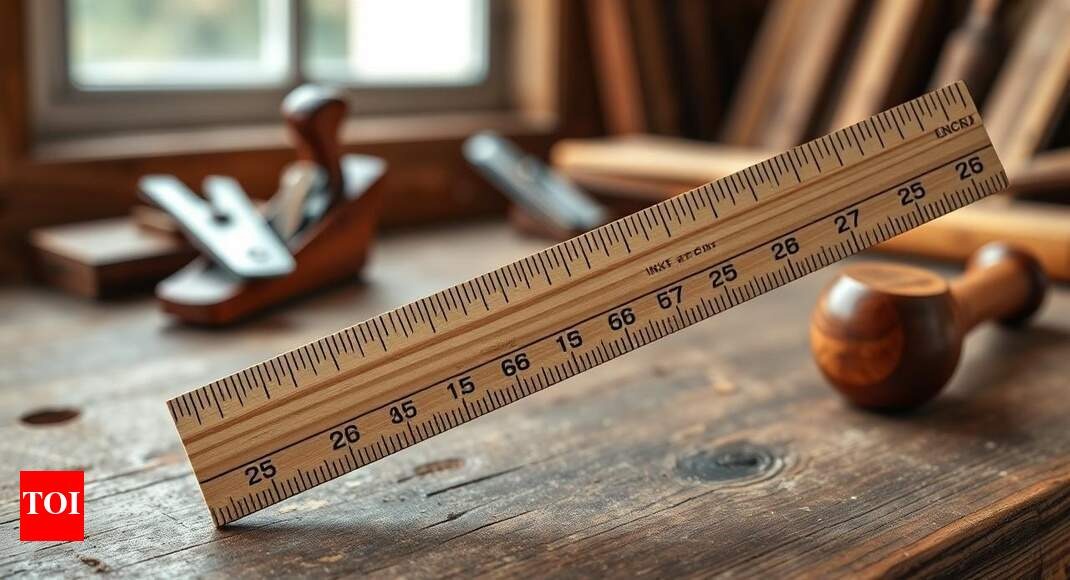Inches to Meters Height Conversion A Complete Guide
In a world where measurements vary from one country to another, knowing how to perform an inches to meters height conversion is an essential skill. Whether you are filling out an international form, measuring for a sports requirement, or just curious about your height in a different unit, understanding how to convert between inches and meters will make life a lot easier.
This guide will explain what inches and meters are, why height conversion matters, the exact conversion formula, and practical examples to help you make accurate measurements every time.
Understanding Inches and Meters
Before we dive into the inches to meters height conversion, it’s important to understand what each unit means.
- Inch (in) – Part of the imperial system, commonly used in the United States, Canada (in certain cases), and the United Kingdom. One inch is equal to 1/12 of a foot.
- Meter (m) – The base unit of length in the metric system, used in most countries worldwide. One meter equals 100 centimeters or 1,000 millimeters.
These two measurement systems are different, which is why conversion is necessary when comparing or recording height internationally.
Why Convert Height from Inches to Meters?
There are several scenarios where you might need an inches to meters height conversion:
- International Travel and Residency – Many countries record height in meters on official documents such as passports, visas, and ID cards.
- Sports and Fitness – Athletic competitions, especially global events like the Olympics, often use meters for height and distance measurements.
- Medical Records – Hospitals in metric-based countries require height measurements in meters or centimeters.
- Education and Research – Academic projects, especially in science, often require metric measurements for uniformity.
Without conversion, it’s easy to miscommunicate your height, leading to confusion or errors.
The Exact Conversion Formula
The formula for inches to meters height conversion is straightforward:
Meters = Inches × 0.0254
This works because 1 inch equals exactly 0.0254 meters.
Example: If your height is 70 inches:
70 × 0.0254 = 1.778 meters
So, a person who is 70 inches tall is approximately 1.78 meters tall.
Step-by-Step Conversion Process
Here’s a simple step-by-step method to ensure you get accurate results every time:
- Measure Your Height in Inches – If you know your height in feet and inches, first convert it all to inches.
- Example: 5 feet 10 inches = (5 × 12) + 10 = 70 inches.
- Multiply by 0.0254 – This converts inches to meters.
- 70 × 0.0254 = 1.778 meters.
- Round if Necessary – Depending on your needs, you can round to two decimal places (1.78 meters) for simplicity.
Common Height Conversion Examples
Here are a few quick reference examples for inches to meters height conversion:
- 60 inches = 1.524 meters
- 65 inches = 1.651 meters
- 72 inches = 1.829 meters
- 75 inches = 1.905 meters
While you can memorize a few of these for quick estimates, using the formula ensures accuracy for any number.
Tips for Accurate Conversion
If you want your inches to meters height conversion to be reliable, keep these tips in mind:
- Use a Calculator – Even though the math is simple, a calculator eliminates small mistakes.
- Avoid Rounding Too Early – Perform all calculations first, then round at the end to maintain precision.
- Check the Measurement Source – Ensure your initial height in inches is correct before converting.
- Remember the Conversion Factor – 0.0254 is the exact number, so don’t replace it with rounded values like 0.03 unless precision isn’t critical.
Real-Life Applications
You may be surprised how often you need an inches to meters height conversion:
- Filling out international job applications where height is listed in meters.
- Ordering sports uniforms where the manufacturer uses metric sizes.
- Entering height into a fitness app that defaults to the metric system.
- Converting celebrity heights for fun comparisons between countries.
In many global contexts, the metric system is standard, so knowing your height in meters is both practical and useful.
Digital Tools for Quick Conversion
While it’s good to understand the math, modern technology offers tools that make inches to meters height conversion even faster:
- Online Converters – Websites where you input your height in inches, and it automatically gives you meters.
- Mobile Apps – Many measurement converter apps allow you to store multiple conversions for quick access.
- Smart Assistants – Devices like Alexa, Siri, and Google Assistant can perform conversions instantly when you ask.
However, having the ability to do it manually is still valuable, especially when you don’t have internet access or a device nearby.
Avoiding Common Mistakes
When converting height from inches to meters, some common errors can occur:
- Mixing Up Centimeters and Meters – Remember, 1 meter = 100 centimeters, so 1.75 meters is the same as 175 centimeters.
- Using the Wrong Conversion Factor – Using approximate numbers instead of 0.0254 can lead to inaccurate results.
- Forgetting to Convert Feet to Inches First – If you start with feet and inches, always convert the entire height to inches before multiplying.
By being mindful of these mistakes, you can ensure your conversions are always correct.
Final Thoughts
Mastering the inches to meters height conversion is a valuable skill for anyone who works, travels, or communicates across different measurement systems. The process is simple — just multiply your height in inches by 0.0254 — but it can save you from confusion, miscommunication, and even costly errors.
Whether you’re entering information on a form, tracking your health statistics, or just satisfying your curiosity, knowing how to convert height between inches and meters is a practical piece of knowledge in our globalized world. With practice, you’ll be able to make the conversion in seconds — no calculator required.





